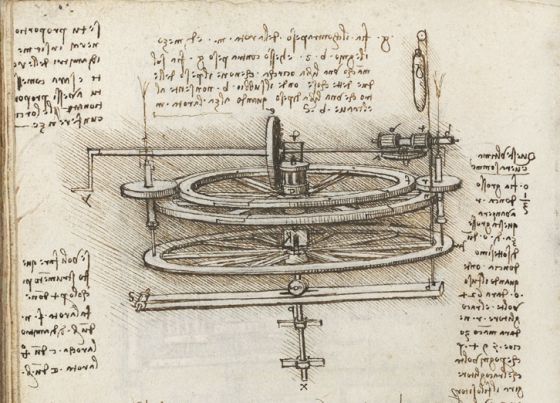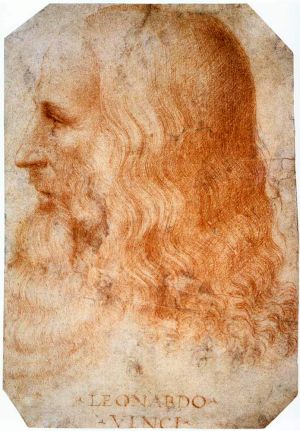Dissecting the Da Vinci codices
http://elpais.com/elpais/2012/05/30/inenglish/1338369678_869997.html

A design for a "spring that moves." / MADRID CODICES I & II (BNE)
One night he ended up discovering how to square the circle. On another he would be at rock bottom because of an unhappy love affair. One day he catalogued the 116 books in his library - which included works by Aristotle, Saint Augustine, Aesop, Ovid, Pliny, plus manuals on herbs, anatomy, philosophy, cosmography and grammar - while another day he described the essential items in his wardrobe. For a commission he drew a map of Tuscany showing an imaginary diversion of the River Arno and a machine for crossing a mountain in a straight line. He drew connecting rods, cranks, pins, hinges and screws. At the same time he immersed himself in a world of springs and pulleys.
The great polymath of mankind's history, Leonardo da Vinci (1452-1519), also devoted all the time in the world to Marco d'Oggiono, nicknamed "Salai" (or, Little Devil, after a fashionable novella of the era), even if it was futile to try to tame the object of his misguided passion. When Da Vinci was part-paralyzed by a stroke, Salai offered all his paintings to the king of France - among them a small canvas that would become hugely famous - and fled back home with the money. Da Vinci remained in France, sick, impoverished and abandoned.
Elisa Ruiz, professor of paleography and official documents at Madrid's Complutense University, has reconstructed Da Vinci's life story without letting herself be swayed by imagination or myth. Naturally she hasn't read Dan Brown's novel The Da Vinci Code, the plot of which is a harmless juggling exercise compared with the real life of an exceptional man who had more than his fair share of psychological issues. The illegitimate son of a notary and a peasant woman, he was an autodidact with no academic training and whose ignorance of Latin and Greek meant he was unable to access valuable works. He was also a homosexual, and was tried for sodomy, as well as being a perfectionist who constantly revised his works, never able to finish anything.
And he was also, adds Ruiz, "an influential man who upended scientific criteria and defended the experimental method; a non-conformist with modern ideas who would triumph many years later." In short, he was a genius born "before his time."


